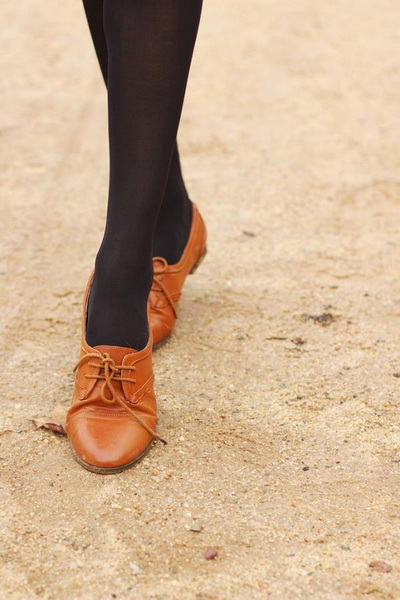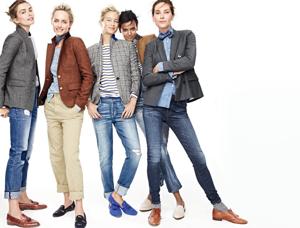Content Menu
● Understanding Shoe Size Differences
● The Comfort Factor
>> Pros of Wearing Men's Shoes
>> Cons of Wearing Men's Shoes
● Styling Men's Shoes
>> Casual Looks
>> Dressier Outfits
>> Seasonal Styles
● Choosing the Right Pair
● The Cultural Shift Towards Unisex Footwear
● The Rise of Gender-Neutral Fashion
>> Impact on Footwear Choices
>> Real-Life Examples of Women Wearing Men's Shoes
● Tips for Shopping Men's Shoes as a Woman
● The Future of Footwear Fashion
● Conclusion
● Frequently Asked Questions
>> 1. Can women wear men's running shoes?
>> 2. How do I convert my women's shoe size to men's?
>> 3. Are there specific styles of men's shoes that women should avoid?
>> 4. Can wearing men's shoes cause foot problems?
>> 5. Where can I find stylish men's shoes suitable for women?
The question of whether women can wear men's shoes is one that has gained traction in recent years, especially as fashion norms continue to evolve. Traditionally, shoe designs have been categorized by gender, leading many to believe that certain styles are strictly for men or women. However, the reality is much more nuanced. This article explores the practicality, comfort, and style considerations for women wearing men's shoes, along with a comprehensive guide on how to choose and style them.

Understanding Shoe Size Differences
Before delving into the specifics of wearing men's shoes, it's essential to understand the differences in sizing between men's and women's footwear. On average, men's shoes are about 1.5 sizes larger than women's shoes. For instance:
- A men's size 8 corresponds to a women's size 9.5.
- A men's size 10 is approximately a women's size 11.5.
This sizing difference is crucial when selecting shoes from the opposite gender's section. Women should also consider the width of the shoe; men's shoes tend to be wider, which can be beneficial for those with broader feet or who prefer a roomier fit.
The Comfort Factor
One of the primary reasons women opt for men's shoes is comfort. Many women find that men's sneakers and running shoes offer better support and cushioning compared to their female counterparts. Men's athletic shoes often feature wider toe boxes and more robust construction, making them suitable for various activities.
Pros of Wearing Men's Shoes
- Broader Fit: Ideal for women with wider feet.
- Increased Comfort: Many find men's shoes more comfortable due to better cushioning.
- Durability: Men's shoes are often designed for more rigorous use, which can translate into longer-lasting wear.
Cons of Wearing Men's Shoes
- Style Differences: Some styles may not align with personal aesthetics.
- Fit Issues: If a woman has narrow feet, men's shoes may be too loose or uncomfortable.
- Limited Options: Certain types of footwear (like high heels) are not available in men's styles.
Styling Men's Shoes
Wearing men's shoes doesn't mean sacrificing style. In fact, they can add an edgy or sophisticated touch to various outfits. Here are some tips on how to style men's shoes effectively:
Casual Looks
- With Jeans: Pairing men's sneakers or loafers with jeans creates a laid-back look that is both stylish and comfortable.
- With T-Shirts: A simple t-shirt paired with men's shoes can create a chic yet effortless outfit.
Dressier Outfits
- With Dresses: Men's oxfords or brogues can complement a dress beautifully, adding a touch of masculinity to a feminine outfit.
- With Skirts: A-line skirts paired with men's dress shoes can create an interesting contrast that stands out.
Seasonal Styles
- Summer Looks: Men's sandals or slip-ons can be great for summer outfits, offering breathability and comfort.
- Winter Styles: Chunky boots designed for men can keep you warm while providing a rugged aesthetic.

Choosing the Right Pair
When selecting men's shoes as a woman, consider the following factors:
1. Size Conversion: Use the size conversion rule (subtract 1.5 sizes) to find your equivalent in men's sizes.
2. Fit and Comfort: Always try on shoes if possible. Walk around in them to ensure they provide adequate support without being too tight or loose.
3. Purpose of Use: Consider what activities you will be doing in these shoes—running, casual outings, or formal events—and choose accordingly.
4. Style Preferences: Ensure that the design aligns with your personal style—there are plenty of unisex options available today.
The Cultural Shift Towards Unisex Footwear
The fashion industry has seen a significant shift towards unisex styles in recent years. Brands like Nike and Adidas have embraced this trend by producing collections that cater to all genders. This shift not only reflects changing societal norms but also encourages individuals to express themselves without being confined by traditional gender roles.
The Rise of Gender-Neutral Fashion
As society increasingly embraces diversity and inclusivity, gender-neutral fashion has emerged as a powerful movement within the industry. This trend promotes clothing and footwear that transcends traditional gender boundaries, allowing individuals to wear what they feel most comfortable in without societal pressure.
Impact on Footwear Choices
This shift has led many brands to create collections specifically designed for all genders, focusing on comfort, functionality, and style rather than adhering strictly to traditional gender norms. As a result:
- Increased Availability: More brands are offering unisex options that appeal to both men and women.
- Diverse Styles: From sneakers to boots, there is now a wider variety of styles available that cater to different tastes while being suitable for anyone.
Real-Life Examples of Women Wearing Men's Shoes
Many celebrities and fashion influencers have embraced the trend of wearing men's shoes, showcasing how versatile and stylish they can be. For instance:
- Rihanna has been spotted wearing oversized sneakers from men's collections.
- Emma Watson, known for her advocacy for gender equality, often mixes menswear into her wardrobe.
These examples highlight how women's fashion is evolving and how embracing traditionally male styles can create unique looks that challenge conventional norms.
Tips for Shopping Men's Shoes as a Woman
Shopping for men's shoes can be an enjoyable experience if approached correctly. Here are some tips:
1. Know Your Size: Always have your foot measured at a store if possible; this will help you get an accurate size when shopping online or in-store.
2. Explore Different Brands: Different brands may have varying fits; don't hesitate to try multiple brands until you find one that suits you best.
3. Consider Online Shopping: Many online retailers offer easy returns, allowing you to try different styles at home without commitment.
4. Look for Sales and Discounts: Men's footwear often goes on sale during different seasons; keep an eye out for deals that allow you to experiment with styles without breaking the bank.
The Future of Footwear Fashion
As we move forward into an era where gender norms continue to blur, it is likely that the footwear industry will continue adapting to meet these changes. Expect more brands to embrace inclusivity by designing versatile footwear options that cater to everyone regardless of gender identity.
Conclusion
In conclusion, women can indeed wear men's shoes if they find them comfortable and fitting well. The key lies in understanding the differences in sizing and fit while also considering personal style preferences. As fashion continues to evolve towards inclusivity, wearing men's footwear becomes not just acceptable but fashionable.

Frequently Asked Questions
1. Can women wear men's running shoes?
Yes, as long as they find them comfortable and supportive.
2. How do I convert my women's shoe size to men's?
To convert from women's to men's sizes, subtract 1.5 from your women's size.
3. Are there specific styles of men's shoes that women should avoid?
Women may want to avoid styles that are traditionally very narrow or designed specifically for male foot anatomy.
4. Can wearing men's shoes cause foot problems?
If the fit is incorrect (too loose or too tight), it could lead to discomfort or foot issues; always prioritize comfort.
5. Where can I find stylish men's shoes suitable for women?
Many retailers now offer unisex options; brands like Vans and Converse provide stylish choices that appeal to all genders.

















